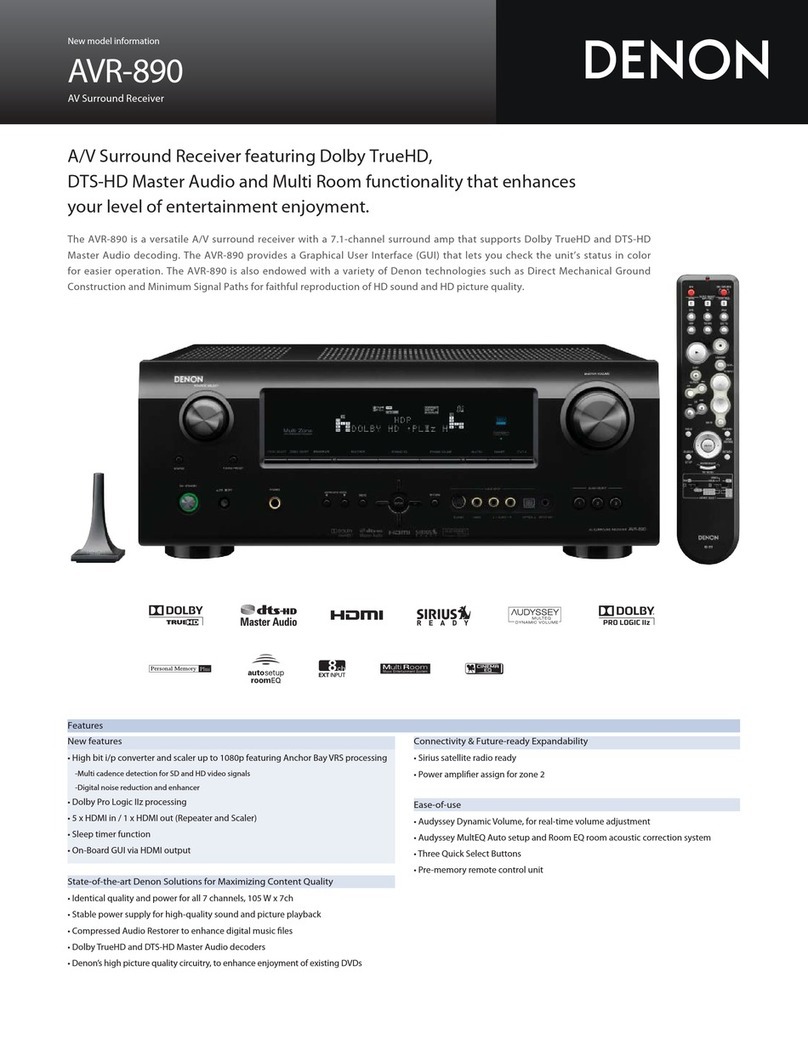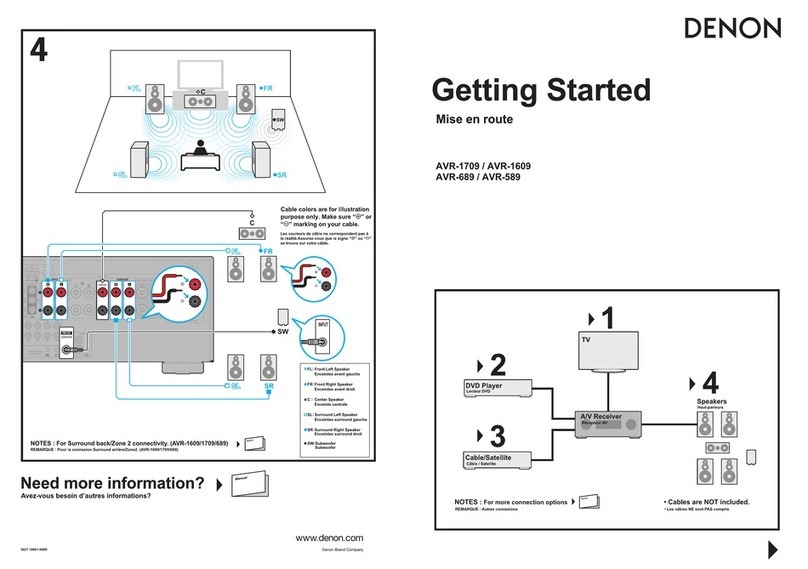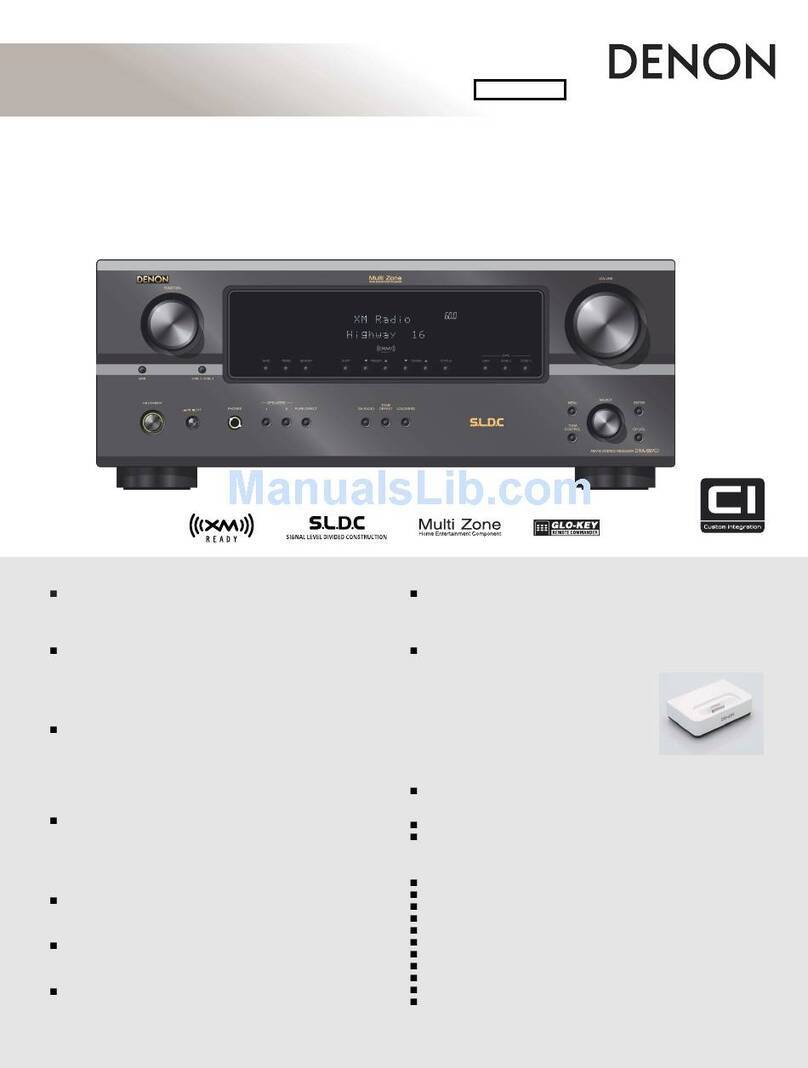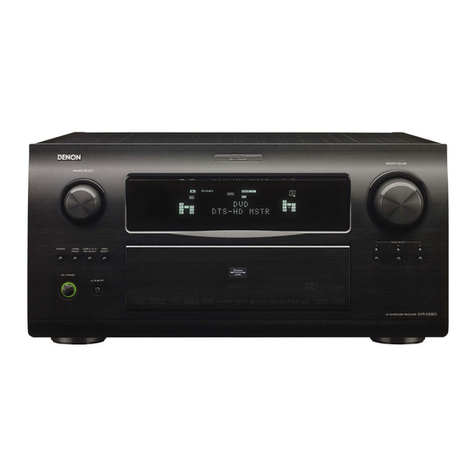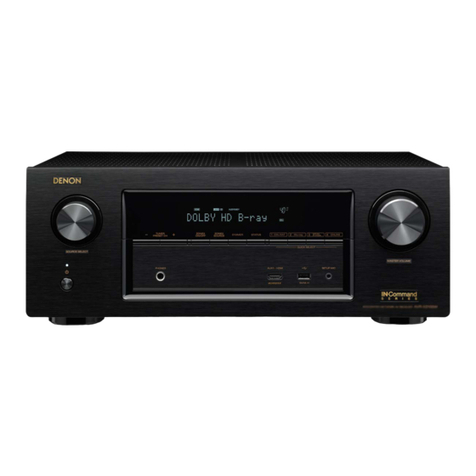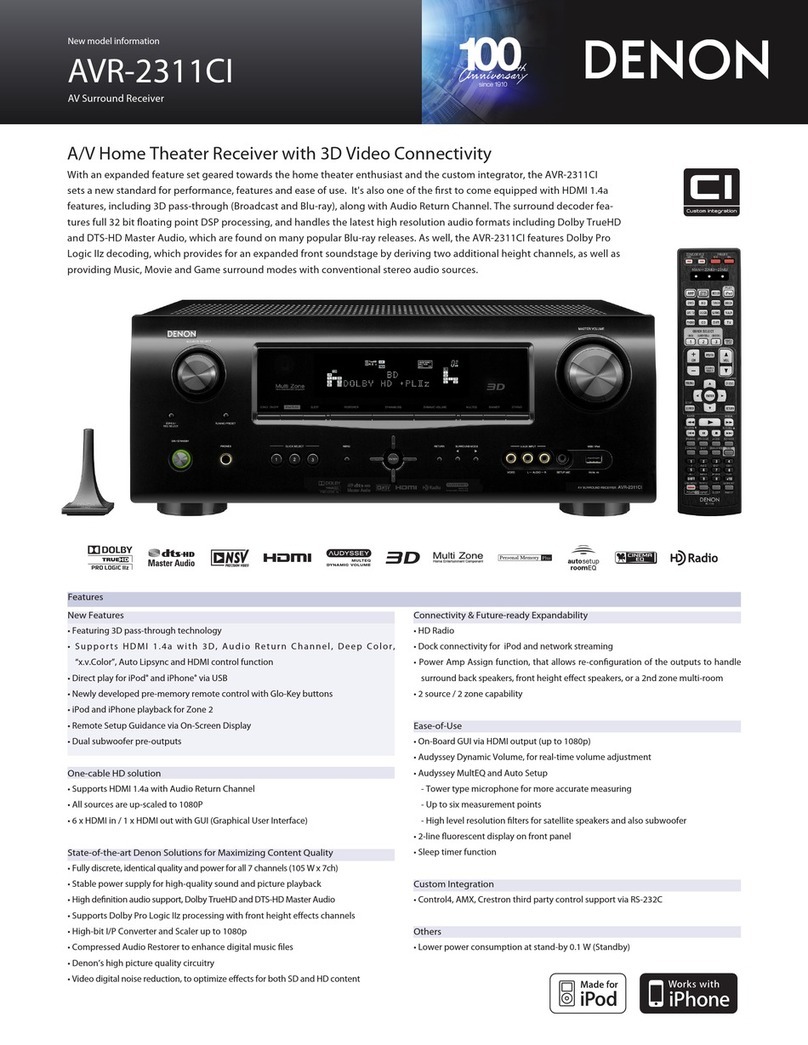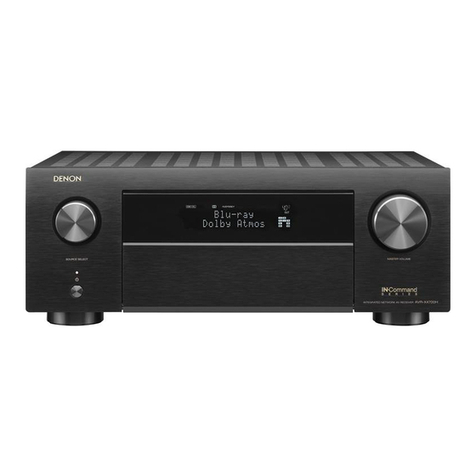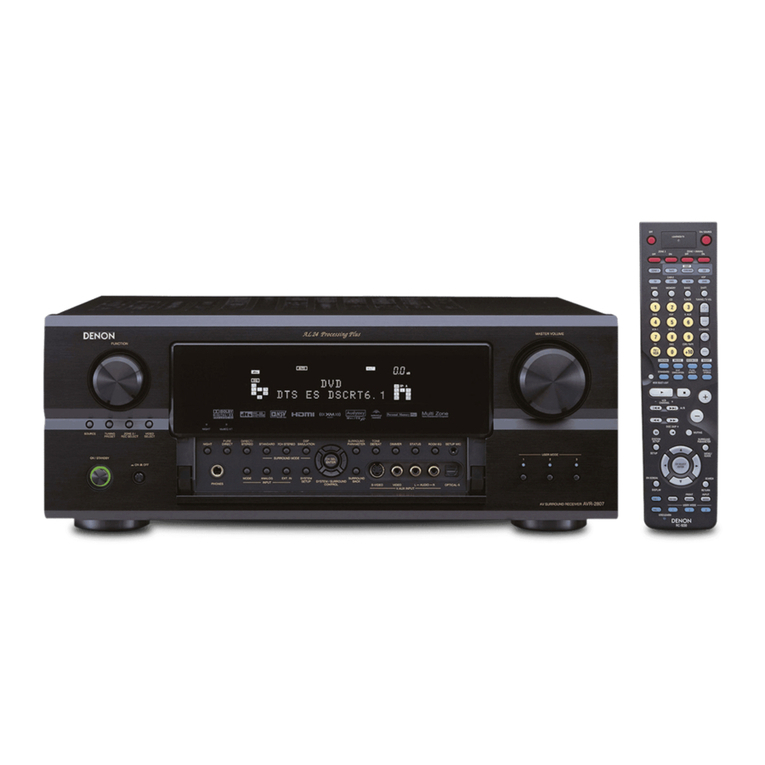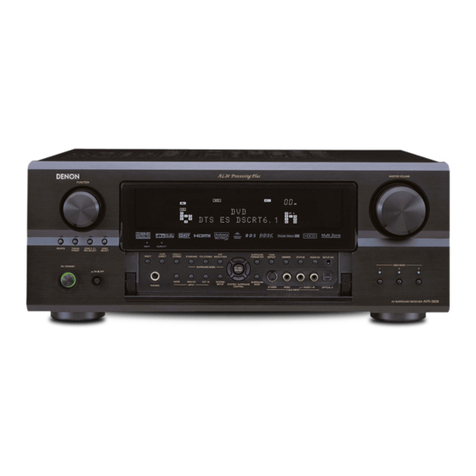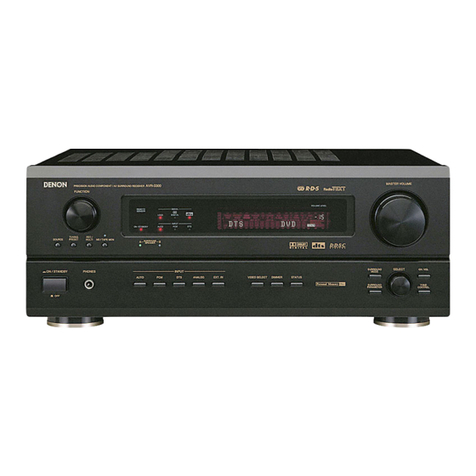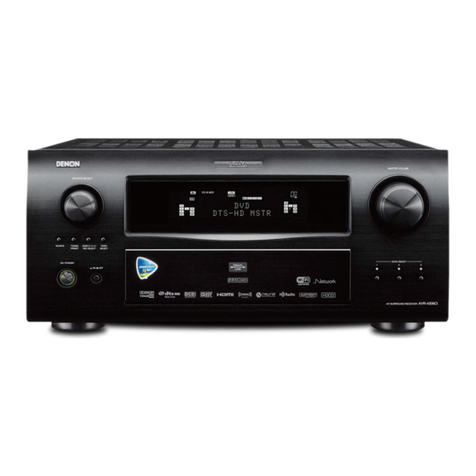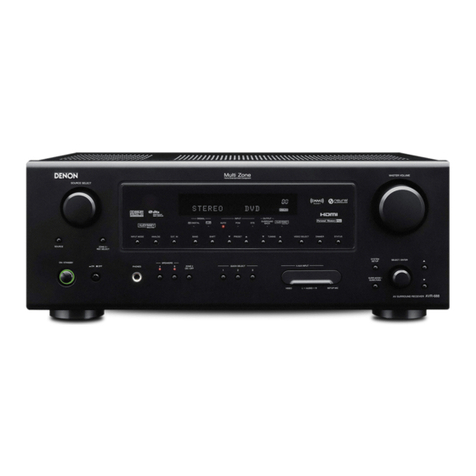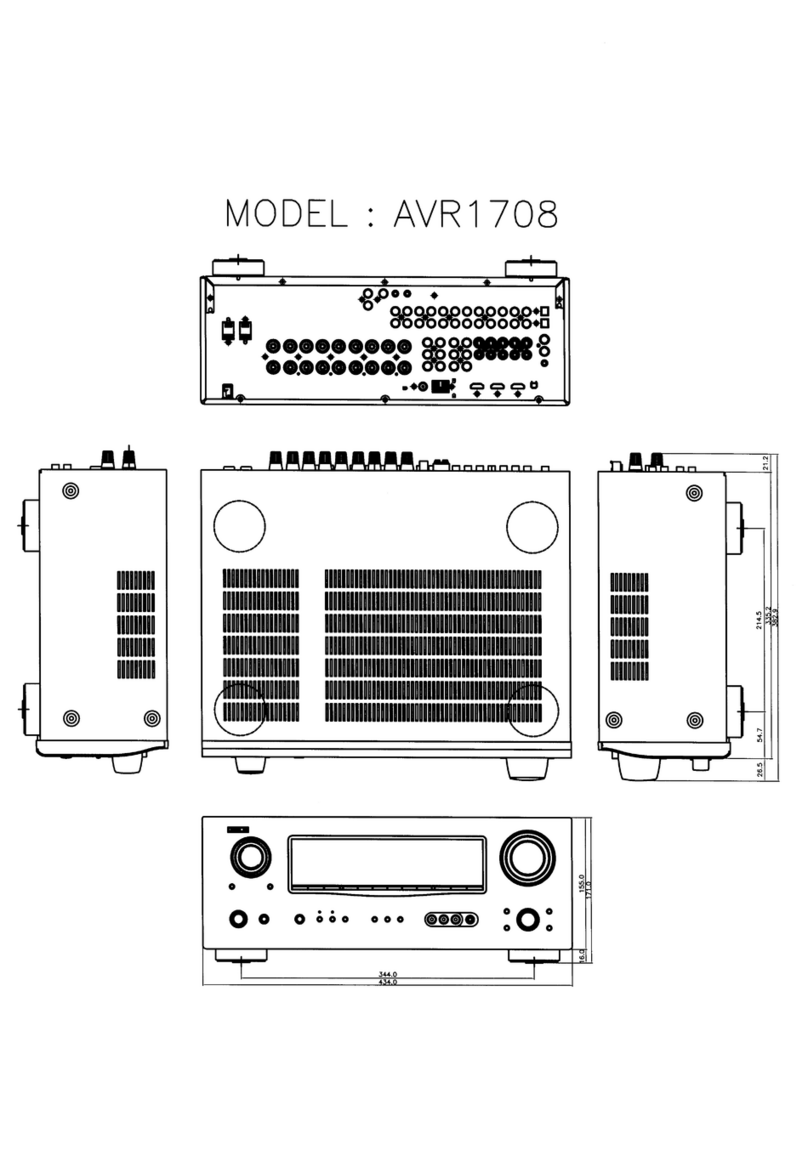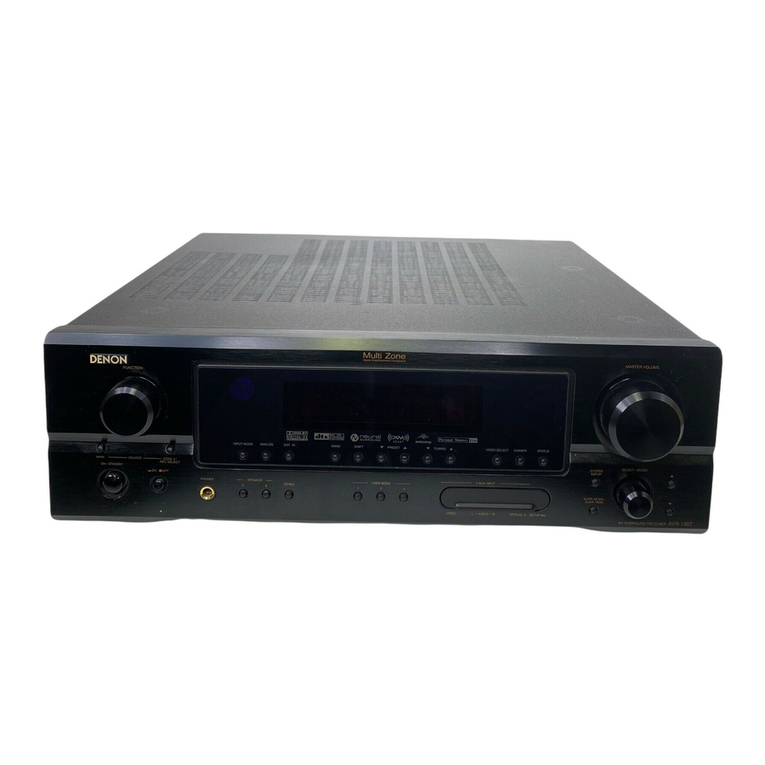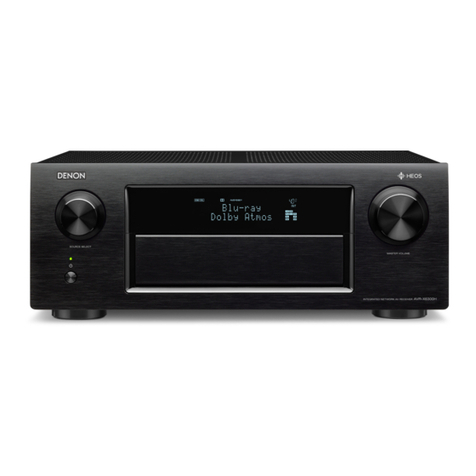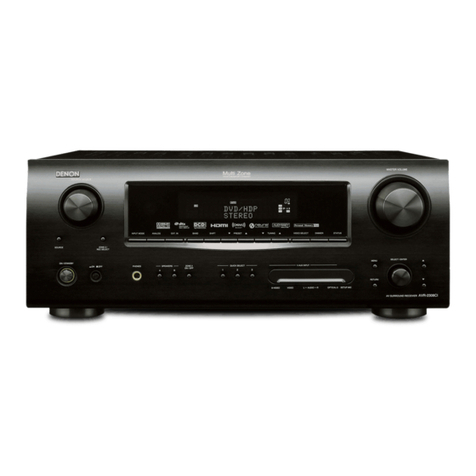
Ll
2 CAUTIONS ON INSTALLATION
Noise or disturbance of the picture may be generated if this unit or
any other electronic equipment using microprocessors is used near a
tuner or TV.
this happens, take the following steps:
Install this unit as far as possible from the tuner or TV.
Set the antenna wires from the tuner or TV away from this unit’s
power cord and input/output connection cords.
Noise or disturbance tends to occur particularly when using indoor
antennas or 300 R/ohms feeder wires. We recommend using
outdoor antennas and 75 Q/ohms coaxial cables.
For heat dispersal, leave at least 0.3 f-t (IO cm1 of space between
the top, back and sides of this unit and the wall or other compo-
nents.
0
3 CAUTIONS ON HANDLING
l Switching the input function when input jacks are not
connected
A clicking noise may be produced if the input function is switched
when nothing is connected to the input jacks. If this happens,
either turn down the VOLUME control or connect components to
the input jacks.
l Muting of PRE OUT jacks, HEADPHONE jack and SPEAKER
terminals
The PRE OUT jacks, HEADPHONE jack and SPEAKER terminals
include a muting circuit. Because of this, the output signals are
greatly reduced for several seconds after the power operation
switch is turned on.
If the volume is turned up during this time, the output will be very
high after the muting circuit stops functioning. Always wait until
the muting circuit turns off before adjusting the volume.
l Whenever the power operation switch is in the STANDBY
state, the apparatus is still connected on some AC line
voltages.
Please be sure to unplug the cord when you leave home for,
say, a vacation.
0
4 FEATURES
1. Powerful, Versatile Amplifier
High-Quality Power Amplifier:
High-speed, high-power transistors employed in a rational
circuit configuration reflect DENON’S advanced amplifier
technology and ensure a very hefty, clean power output.
2. Signal Level Divided Construction (SLDC)
The circuits handling low-level and high-level signals have been
divided into separate blocks to ensure that influences from these
signals on each other are held to an absolute minimum. This
chassis design in this unit is called the Signal Level Divided
Construction (SLDC). Signals for output are cleaner than before,
allowing them to be reproduced with even greater fidelity and
clarity.
)
/ /
/
.X 0.3 ft (10 cm) or more /
/ /
/ , ,
0.1_
,- o-
z=: 0 /
*x I I .x
On 00000000 000 /
$ a0 A, ----- ,HE
$ , i 5
~,,,,,~,,~,,,,,,,,,,,,,,,,,,,,~,,,,,,,,/
I
0.3 ft (IO cm) or more0.3 ft (IO cm) or more
r 1
/
$
/
[ $ Wall
/
/
I I I I
~,,~~~~~~,,,/,,,,,,/,,/,,///
l Range of operation of the remote control unit
Point the remote control unit at the remote control sensor as shown
on the diagram at the left.
NOTES:
l The remote control unit can be used from a straight distance of
approximately 23 feet/7 meters, but this distance will shorten or
operation will become difficult if there are obstacles between the
remote control unit and the remote control sensor, if the remote
control sensor is exposed to direct sunlight or other strong light, or
if operated from an angle.
l Neon signs or other devices emitting pulse-type noise nearby may
result in malfunction, so keep the set as far away from such
devices as possible.
3. Remote Control Functions
The Remote Control W-895) commands not only the receiver
but can also operate the main functions of a DENON CD player
and a cassette deck.
5
